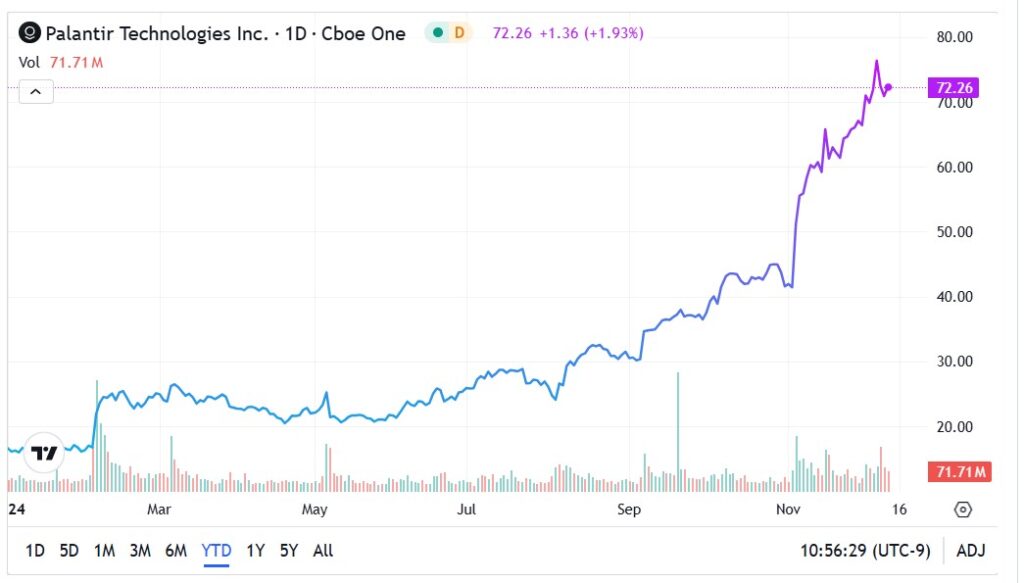It’s no secret that big-data analytics firm Palantir Technologies Inc PLTR represents one of this year’s biggest success stories. At the same time, a year-to-date return of well over 300% has analysts skeptical about a sustained run. Presently, PLTR stock trades at an extremely rich valuation, leading to a split sentiment on Wall Street.
Despite the reasonable concerns, the smart money appears to generally lean toward a bullish posture. In particular, the latest read of PLTR stock’s unusual options activity shows heightened activity for the $70 call expiring on Jan. 16, 2026. The total value hit $393,000, conspicuously above other aberrant options trades of the midweek session.
Investors who continue to pile into PLTR stock may be looking at the bigger picture. A growing number of entities — particularly those related to the defense industry — have adopted Palantir’s artificial-intelligence-based solutions.
Even more enticing, the empirical data suggests that Palantir bulls are justified in their optimism.
Also Read: Alphabet’s Quantum Willow Chip Wows Analyst: Google At The ‘Leading Edge Of Technology Innovation’
Running the Tape on PLTR Stock
While the overvaluation concerns surrounding PLTR stock are legitimate, it’s important to consider the hard numbers. When running the tape, Palantir’s equity has demonstrated an upward bias in its weekly performance (defined as the difference between Monday’s open and Friday’s close) since making its public market debut in 2020.

Specifically, out of 219 weeks, 119 saw a positive return (54.3%), 99 saw a loss (45.2%) and one week was flat. In other words, on any given Monday, bullish investors should have a modest edge that their position will end up in the black by Friday.
However, the beauty of multi-leg options trades is that speculators can adjust the parameters of success. For example, in a bull call spread — a transaction that involves buying a call and simultaneously selling a higher-strike call of the same expiration date — traders can potentially deploy a strategy where the breakeven price is below the current open market price.
This dynamic is possible because the credit received from the short call helps partially offset the debit paid for the long call. In Palantir’s case, if success is defined as a weekly return greater than a 1% loss, the odds of a positive result jump to nearly 61%.
Playing 4D Chess with Palantir
Admittedly, it may be difficult to justify a heavy long exposure to PLTR stock given its rich valuation. However, the short-term outlook may be much more enticing, especially if the parameters of success are modulated.
One compelling idea that stands out is the 68/71 call spread (i.e. buy the $68 strike, sell the $71 strike) that expires Dec. 20 of this year. At time of writing, the net debit paid to enter the trade was $190, which also represents the most that can be lost. The maximum reward comes out to $110 or a payout of 57.89%.
Compellingly, the breakeven price for this transaction sits at $69.90, or more than 2.5% below the time-of-writing price. Using this benchmark as the threshold for success, the likelihood that PLTR stock will be somewhat profitable over a one-week period soars to around 65%.
In addition, to collect the maximum reward, PLTR stock doesn’t necessarily need to move higher by Dec. 20. Rather, it just needs to not fall below $71. For some traders, that may be a more attractive proposition than a standard open-market long position. However, it’s important to keep in mind that both the risk and the reward are capped.
Read Next:
Photo: Shutterstock
Market News and Data brought to you by Benzinga APIs